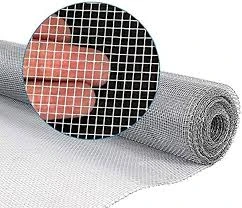-
+86 15030157877
-
sales@galvanizedmetalmesh.com
Dec . 13, 2024 10:18 Back to list
hexagonal wire netting
The Versatility and Applications of Hexagonal Wire Netting
Hexagonal wire netting, commonly referred to as hex wire mesh, is a type of fencing material recognized for its unique hexagonal pattern. This versatile mesh has seen a wide range of applications due to its strength, flexibility, and durability. From agriculture and construction to wildlife protection and gardening, hexagonal wire netting has proven its worth across various fields.
Structure and Manufacturing
The structure of hexagonal wire netting consists of thin, steel or aluminum wires twisted together to form a series of hexagonal apertures. This design not only enhances the tensile strength of the material but also allows it to be lightweight and easy to handle. The wires are typically galvanized, providing a protective layer against rust and corrosion, making it suitable for outdoor use. In some cases, hexagonal wire netting is coated with vinyl for additional protection and aesthetic appeal.
Agricultural Uses
One of the primary applications of hexagonal wire netting is in agriculture. It is widely used for building animal enclosures, such as chicken coops, rabbit hutches, and pens for small livestock. The hexagonal openings are designed to prevent animals from escaping while allowing ample ventilation and visibility. Additionally, farmers often utilize this type of fencing to protect crops from pests and larger animals such as deer. By installing hexagonal wire netting around fields, farmers can significantly reduce the risk of crop damage and loss.
Construction and Infrastructure
hexagonal wire netting

Hexagonal wire mesh is also employed in construction and civil engineering projects. Its robust nature allows it to be used in retaining walls, drainage ditches, and erosion control structures. In these applications, the mesh serves as a support system for soil and rocks, preventing erosion and providing stability. Furthermore, hexagonal wire netting is often combined with other materials, such as soil or rocks, to create gabions—wire mesh containers filled with stone used for protecting riverbanks and steep slopes.
Wildlife Protection and Conservation
In conservation efforts, hexagonal wire netting plays a critical role in protecting wildlife habitats. It can be used to create barriers that prevent invasive species from encroaching on native ecosystems. Similarly, the mesh is often employed in the construction of wildlife corridors, providing safe passage for animals while keeping them away from roads and other human activity. This dual functionality not only aids in conservation but also promotes biodiversity by offering safe environments for various species.
Gardening and Landscaping
For gardening enthusiasts, hexagonal wire netting is an invaluable tool. It can be used as trellises for climbing plants such as peas, cucumbers, and vines, providing them with the necessary support to grow upwards. Gardeners also use hex wire mesh to create plant cages that protect delicate seedlings from pests and harsh weather conditions. Moreover, its aesthetic appeal allows it to blend seamlessly into floral gardens and landscapes, giving a rustic charm to outdoor spaces.
Conclusion
Hexagonal wire netting is a multifaceted product that has become integral to many industries. Its unique design and durability make it an ideal choice for various applications, ranging from agriculture and construction to wildlife protection and gardening. As sustainability and environmental considerations continue to play a significant role in development, the demand for effective and efficient materials like hexagonal wire netting is likely to grow. Whether you are securing your garden, protecting your livestock, or engaging in conservation efforts, hexagonal wire netting offers a reliable solution that balances functionality with endurance. Its practicality, coupled with the ability to easily adapt to differing needs, ensures that hexagonal wire netting will remain a popular choice for years to come.
-
Welded Gabion Solutions: Durable & AI-Enhanced Designs
NewsAug.01,2025
-
Premium Welded Gabion Mesh | Robust & Eco-Friendly
NewsJul.31,2025
-
Premium Eco-Friendly Roof Tiles | Affordable & Durable
NewsJul.31,2025
-
Premium Roof Tiles for Durable & Stylish Roofing Solutions
NewsJul.30,2025
-
High-Quality Roof Tiles for Durable & Stylish Roofing Solutions
NewsJul.29,2025
-
High Quality Square Wire Mesh Manufacturer & Supplier for Wholesale
NewsJul.29,2025



